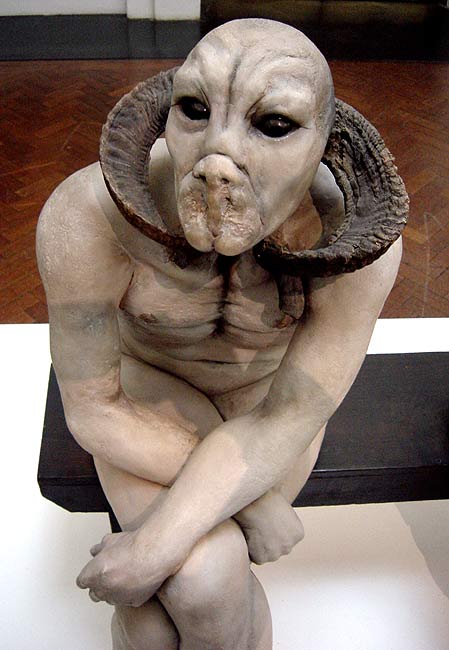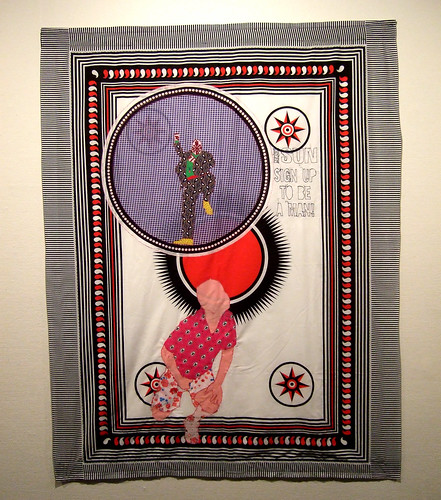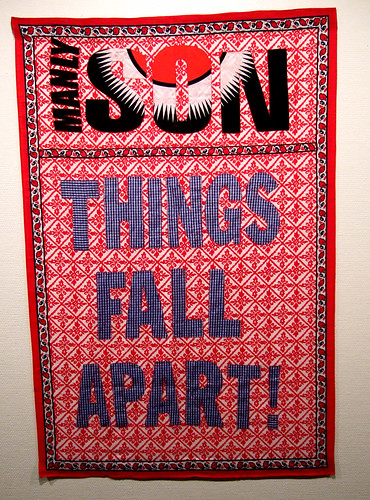Jane Alexander







 BIO
BIOJane Alexander was born in Johannesburg, South Africa in 1959. She received her MA in Fine Arts degree at the University of the Witwatersrand, Johannesburg, in 1986. Alexander lives and works in Cape Town, where she is a Senior Lecturer in sculpture, photography and drawing at the University of Cape Town.
Historyone of South Africa's most important and internationally acclaimed artists. Although best known as a sculptor for iconic works .
Alexander's work does not lend itself to easy interpretation, but despite the artist's silence on the subject, the menacing and eerie figures The Butcher Boys, like Alexander's other sculptures from the late Eighties, were understood to be a manifestation of the deeply maladjusted apartheid society. In the years of change, a new series of work was begun, entitled 'Integration Programme', in which less fearsome but alienated-seeming figures, often hooded, were presented in disturbing tableaux. A second important body of work is Alexander's photomontages, in which her sculptures take on a history of their own as the frequent subject of her compositions.
Vuyile Voyiya

 BIO
BIOVuyile Voyiya was trained as a sculptor at the Michaelis School of Fine Art in Cape Town, best known for his remarkably articulated linocut prints, which, with their expressive and sensitive modulation of form, are about as close as one can come to achieving three dimensionality on paper. In this simple but unforgiving medium, Vuyile works largely with images of the human body. Often suspended in space, reacting defensively to an unseen threat, to a person or an action beyond the picture frame, the subjects of Vuyile's works induce a sense of extreme disquiet in the viewer.As well as an educationist, actor, television producer and curator, Vuyile is known as a filmmaker, notably directing and co-producing, with Julie McGee, The luggage is still labeled: blackness in South African art 2003. This, as the title suggests, was an interrogation through a series of interviews on whether the processes of transformation in South Africa had achieved any improvement in the situation for black artists.
mustafa maluka






 BIO
BIOMustafa Maluka was born in 1976, Cape Town, South Africa
His interests range from design and fashion to art history, cultural analysis, philosophy and psychology. Maluka’s working method is the process of selecting and assembling portraits. He collects images of faces that have a particular look, that project a particular energy and pride. He liberates the images from their original context and recreates them in a new form on canvas with many layers of paint. Mustafa Maluka studied at the De Ateliers Art Institute in Amsterdam. He lives and works in Helsinki and New York.
lawrence lemaoana



 BIO
BIOLawrence Lemaoana's latest body of work has, as its departure point, a fascination with the role of the mass media in present-day South Africa. In Lemaoana's work the relationship between the 'People' and the media is problematised as a relationship of representation and control - who gets to control modes of representation; and who gets to represent those in control. The power of the media to act as didactic tool or propagandistic weapon, and the power of the media to reveal (and shape) the psyche, or group consciousness of the People, is taken up in Lemaoana's work with the artist's trademark cynical satire.
































